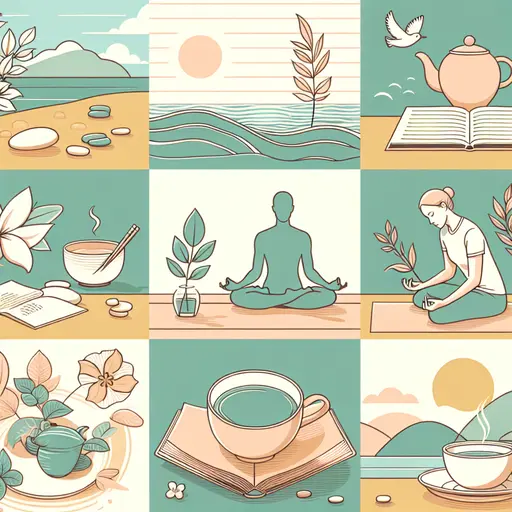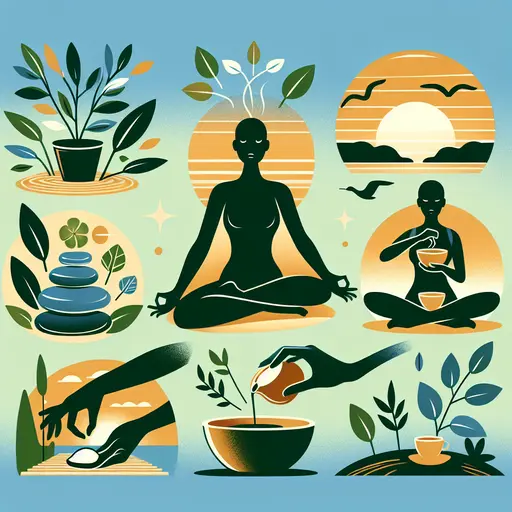Relaxing the Mind and Body: The Therapeutic Benefits of Progressive Muscle Relaxation
Discover the therapeutic benefits of progressive muscle relaxation, a natural remedy for stress and anxiety. This technique can help improve sleep, reduce muscle tension, and enhance mental health.

With the hustle and bustle in today’s world, it can be difficult to find time to unwind and relax. Yet, relaxation is key to maintaining our health and well-being. One method that is gaining popularity for its effectiveness in reducing stress is progressive muscle relaxation. This technique has proven to be a powerful tool for calming the mind and body, providing therapeutic benefits that extend far beyond stress relief.
Delving Deeper into the Concept of Progressive Muscle Relaxation
Progressive muscle relaxation (PMR), an intriguing technique with roots dating back to the early 20th century, was conceived and developed by Dr. Edmund Jacobson. Designed with the purpose of cultivating deep relaxation, PMR is a method that centers around the deliberate tensing and subsequent relaxation of various muscle groups within the body.
The fascinating process of PMR begins with the process of tensing a specific muscle group, holding that tension momentarily, and then releasing it. By focusing consciously on the sensation contrast between tension and relaxation, individuals can gain a deeper understanding of their physical state and adopt better control over their body's response to stress.
The immense value of this technique lies in its ability to significantly reduce overall tension and stress levels, thereby enhancing both physical and mental well-being. This makes PMR not only a valuable tool for relaxation and stress management, but also a means to improve overall health and quality of life.
From managing stress-related conditions, alleviating anxiety, or even just unwinding after a hard day at work, the applications of PMR are vast and varied, making it a versatile relaxation technique worthy of exploration.
The Intricate Science Behind Progressive Muscle Relaxation
Progressive Muscle Relaxation (PMR) is a technique that has garnered substantial attention from the scientific community due to its remarkable efficacy in dealing with physical and psychological stress symptoms. This is borne out by numerous scientific studies that have underscored the significant role of PMR in reducing physical symptoms of stress, such as headaches and stomachaches. Furthermore, it has been proven to be a vital tool in managing psychological symptoms like anxiety and depression.
For instance, a study published in the International Journal of Nursing Studies came to the interesting conclusion that nursing students who practiced PMR experienced a dramatic decrease in their stress levels. This decrease was markedly significant when compared to their peers who did not incorporate PMR into their routine. This critical finding underscores the effectiveness of PMR in stress management, particularly in high-stress professions like nursing.
Notably, the benefits of PMR extend beyond immediate stress relief. While it is a potent tool for instant relaxation, regular practice of PMR can also promote long-term mental well-being. By regularly practicing this technique, individuals can foster a healthier response to stressful situations, thereby improving their overall quality of life.
Moving forward, it will be fascinating to track the growing body of research around PMR and its potential applications in various fields. Already, it's clear that this technique holds significant promise for anyone looking to better manage stress and foster a state of deep relaxation.
How to Practice Progressive Muscle Relaxation to Reduce Stress and Improve Well-being
Progressive Muscle Relaxation (PMR) is a deep relaxation technique that has been effectively used to control stress and anxiety, relieve insomnia, and reduce symptoms of certain types of chronic pain. This technique involves two primary steps. The first step is to intentionally apply tension to specific muscle groups, such as your shoulders or hands, holding this tension for about five seconds. The second step involves quickly releasing this tension, allowing your muscle to relax. The contrasting sensation of tension and relaxation helps to highlight how relaxation feels, promoting a greater sense of bodily awareness and tranquility.
This process is typically repeated for different muscle groups throughout your body, systematically starting from your toes and progressively working your way up to your head. With regular practice, this technique can help you better understand the difference between a tensed muscle and a completely relaxed one. Over time, this awareness can help you spot and counteract muscle tension as soon as it starts, providing a powerful tool for managing stress and discomfort.
To help you get started with Progressive Muscle Relaxation, here’s a detailed step-by-step guide:
- Find a quiet and comfortable space where you won’t be disturbed. This could be a room in your home, a space in your office, or even a secluded spot in a park or garden. The key is to choose a place where you feel at ease and will be free from interruptions for the duration of your practice.
- Begin by taking a few deep, slow breaths. This will help you focus your attention and prepare your body and mind for relaxation. Inhale deeply through your nose, hold the breath for a moment, and then exhale through your mouth. Repeat this process a few times until you start feeling more relaxed.
- Start with your feet. Tense the muscles as tightly as you can - imagine you are trying to dig your toes into sand. Hold this contraction for about five seconds.
- After five seconds, abruptly relax the muscles in your feet. Take a moment to notice the sensation of release and the subsequent relaxation. Feel the tension evaporating from your muscles, leaving them loose and relaxed.
- Next, move up to your calves. Follow the same process of tensing and relaxing, maintaining focus and awareness on each individual muscle group as you work your way up your body.
- Continue this process with each muscle group, working your way up to your head. Pay attention to each sensation as you deliberately tense and relax each group of muscles. With time and continued practice, you will become increasingly proficient at inducing relaxation and managing tension in your body.
Remember, the primary goal of Progressive Muscle Relaxation is to learn to recognize and control your body’s response to stress. Effective practice can help you achieve a profound sense of physical relaxation and mental calmness, contributing to improved health and well-being.
The Therapeutic Benefits of Progressive Muscle Relaxation
Progressive Muscle Relaxation, commonly referred to as PMR, is a natural remedy that is gaining popularity due to its numerous therapeutic benefits. This method, which involves tensing and relaxing different muscle groups, contributes immensely to health and well-being. Let's delve into some of the key benefits:
- Reduces Stress and Anxiety: One of the standout benefits of PMR is its ability to reduce stress and anxiety levels. By lowering the stress hormones in the body, PMR promotes a sense of calmness and relaxation. This can be particularly beneficial in our fast-paced world, where stress and anxiety are common.
- Promotes Better Sleep: If you're struggling with sleep issues, PMR could be the solution you need. Regular practice of this relaxation technique can significantly improve sleep quality, reducing problems such as insomnia. It helps to calm the mind and body, preparing you for a good night's sleep.
- Decreases Muscle Tension and Pain: PMR is also a great way to reduce muscle tension and pain. By focusing on tensing and then relaxing each muscle group, it helps to alleviate discomfort associated with muscle tension. This can be especially helpful for people who suffer from conditions that cause chronic pain.
- Enhances Mental Health: PMR's benefits are not just physical. It can also have a positive impact on mental health. Regular practice can help manage symptoms of various mental health conditions like depression and anxiety. It promotes a sense of well-being and positivity, contributing to overall mental health.
- Improves Concentration: The practice of PMR involves focusing on different muscle groups and this can lead to improved concentration and focus. Over time, you might find it easier to concentrate on tasks, making you more productive overall.
- Boosts Immune Function: By reducing stress and promoting relaxation, PMR may also boost the immune system function. A healthy immune system is essential for overall health and resistance against diseases.
In conclusion, PMR offers a host of benefits that can improve both physical and mental health. It's a simple, natural method that can be practiced by anyone and could make a big difference in your life.
Conclusion
Progressive muscle relaxation is a simple and effective technique that can help you to manage stress, improve your sleep, and enhance your overall well-being. So why not give it a try? You may just find it to be the perfect addition to your daily wellness routine.
🌿
Category: Natural Remedies
Join the community
Related Articles

Breaking the Cycle: How Relaxation Techniques Disrupt the Stress Response
Life, beautiful as it is, often comes with its fair share of...

Best Relaxation Techniques for Managing Anxiety
As someone who has battled with anxiety myself, I unde...

The Role of Relaxation Techniques in Stress Reduction
Stress - it's an unavoidable part of modern life. With the q...
Latest Articles

What Sleep Deprivation Does to the Brain
Perhaps you've had those days where you've survived on just ...

The Role of Minerals in Rock Formation
Welcome to another enlightening article on HeavenRelax.com, ...

The Importance of Patience in Our Life
In this fast-paced world we live in, patience is often seen ...
Comments
No comments yet. Be the first to comment!